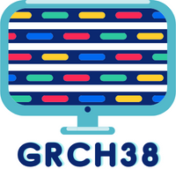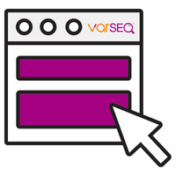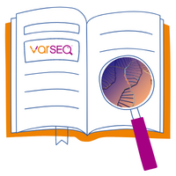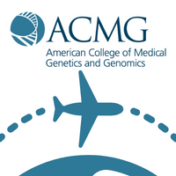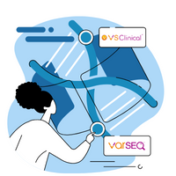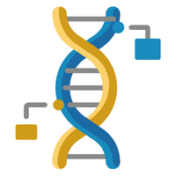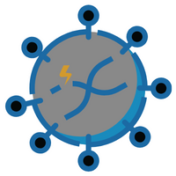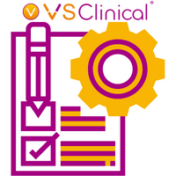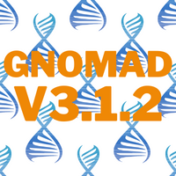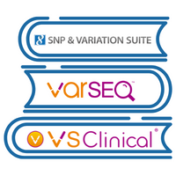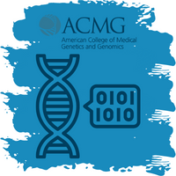I’d like to take a moment to announce the release of updated gene tracks for the GRCh38 genome assembly! Gene annotation tracks are essential to all VarSeq projects and workflows. Whether your favorite gene track is Ensembl or RefSeq, both sources have been updated and released and can be used for variant annotation. These gene tracks are used to annotate… Read more »
When doing next-generation sequencing (NGS) analysis in VarSeq, the fundamental goal is to develop efficient ways to filter through your NGS data. If you are just getting started with Varseq, a pre-designed project template can really come in handy for variant filtering! This blog series will cover a number of template design recommendations for variant filtering on data types ranging… Read more »
We at Golden Helix thoroughly enjoy seeing our software being utilized to solve problems and assist in the diagnosis of hereditary diseases. It is gratifying to be notified of customer publications in which they are doing precisely this. While there have been numerous publications this month showcasing Golden Helix software being applied, below are a few that stuck out specifically…. Read more »
This year’s ACMG conference in Nashville, TN, marked a positive turning point after two years of virtual meetings in our community. The conference was well attended and found an outstanding balance between on-site meetings and virtual talks. From the Golden Helix perspective, it was wonderful to connect with customers and partners at the event. We were very humbled by the… Read more »
Golden Helix is always trying to add new helpful resources to aid in using Golden Helix products for NGS analysis. In today’s blog, I am very excited to introduce a new resource for Golden Helix users! A new resource that is now available is our Golden Helix Annotations product page available on the Golden Helix Learning Hub! The goal for… Read more »
Everyone at Golden Helix is excited to be traveling once again to an eventful week in Nashville, Tennessee, for ACMG 2022! If you are attending the conference, we hope you will stop by our booth and say hello to the team: Andreas Scherer, Ph.D., Darby Kammeraad, Jennifer Dankoff, and myself, Casey Fullem. We are all excited to be having the… Read more »
Although best known for its auto-generation of custom reports, VarSeq comes with a slew of options for exporting your data. In this blog, we will review some of the lesser-known methods for exporting your data into usable formats. These four export options can all be found under the Export tab at the upper left corner of your VarSeq interface (Figure… Read more »
Tumor profiling via next generation sequencing (NGS) often reveals secondary germline variants that may constitute important incidental findings. In May 2021, the American College of Medical Genetics and Genomics (ACMG) released an updated policy statement for reporting incidental findings in exome and genome sequencing data along with a corresponding list of genes. These recommendations state that laboratories should report pathogenic… Read more »
VarSeq software again takes center stage in our recent publications for February. It is our great honor to be a part of the groundbreaking discoveries highlighted below as well as the many others too numerous to include in this blog post! We are happy to contribute to scientific findings from all our analysis platforms, but we are especially proud of… Read more »
Thanks to all those who attended the recent webcast by Dr. Rana Smalling, “Integrating Custom Gene Panels for Variant Annotations”. If you were unable to attend or would like to recap, here is a link to watch the broadcast. We covered a lot of content regarding virtual gene panels, and there were several questions submitted during our Q&A session that… Read more »
2022 has started off with a significant number of customers publishing their research. We saw several customers utilizing various softwares within our suite, but the most prominent being VarSeq. VarSeq is an intuitive, integrated software solution for tertiary analysis. With VarSeq you can automate your workflows and perform variant analysis for gene panels, exomes, and whole genomes. Understanding genomic data… Read more »
Thank you to those who attended our recent webcast by Gabe Rudy, Large Scale PCA Analysis in SVS. For those who could not attend, you can find a link to the recording here. While this webcast discussed methods for principal components analysis (PCA) in SVS, including the new capability for performing principal components analysis on large sample sizes, it also… Read more »
Global population frequency catalogs like 1kG Phase 3, gnomAD, DGV, and others are excellent resources for identifying rare variants in your copy number variant (CNV) analysis. However, they are not exhaustive, and the reality is a lot of variants that are missing from global population frequency catalogs are still common variants. At the same time, CNVs that are identified by… Read more »
In our previous blog, we covered the highlights of our Advanced Report Customization in VSClinical webcast in the context of germline clinical reports. Now, we bring you the next of the series: somatic clinical reports. In the recent webcast, Advanced Report Customization, we covered a range of somatic-focused clinical reports, demonstrating how easy it is to create AMP guideline-based clinical… Read more »
In this blog post, I am very excited to talk about The Broad Institute’s release of the latest version of gnomAD, v 3.1.2, which is now available for use as an annotation source in your SVS or VarSeq projects. For VarSeq users, I also want to point out that gnomAD v3.1.2 can also be used as a population frequency in… Read more »
Happy New Year to all! I hope that you were able to enjoy quality time over the holidays with family and friends. It is time to begin discussing our plans for the new year again, but I would first like to review a few highlights from 2021 that laid the foundation for Golden Helix’s future. Golden Helix had a resoundingly… Read more »
The articles we saw this November and December cited a wide range of applications of our product suite. The following publications feature usage of our SNP & Variation Suite, VSClinical, and VarSeq products. We see them being utilized to identify loci associated with facial eczema in New Zealand sheep, somatic mutation response impact, and assisting in estimating breast cancer risk… Read more »
We would like to announce that a new version of SVS has been released! The headlining feature of the SVS 8.9.1 release was new functionality for Large Data Principle Component Analysis. A detailed description of this new feature can be explored in this recent blog post: Finding a Few Principal Components Quickly from Data with Thousands of Samples. However, there… Read more »
As the number of genes on a gene panel increases, there is the possibility of picking up variants of medical significance that are not related to the primary indication for the test. Especially with large gene panels, exomes, and genomes, it is medically and ethically important to report variants that may be actionable to the patient. These include variants implicating… Read more »
I’m sure everyone’s favorite winter activity is getting cozy next to a fire, with a nice cup of tea, and reading the VarSeq instruction manual, right? Of course all VarSeq users have read the manual, but if you have not had the chance to review this captivating read, let me entice all of you to do so by announcing that… Read more »
